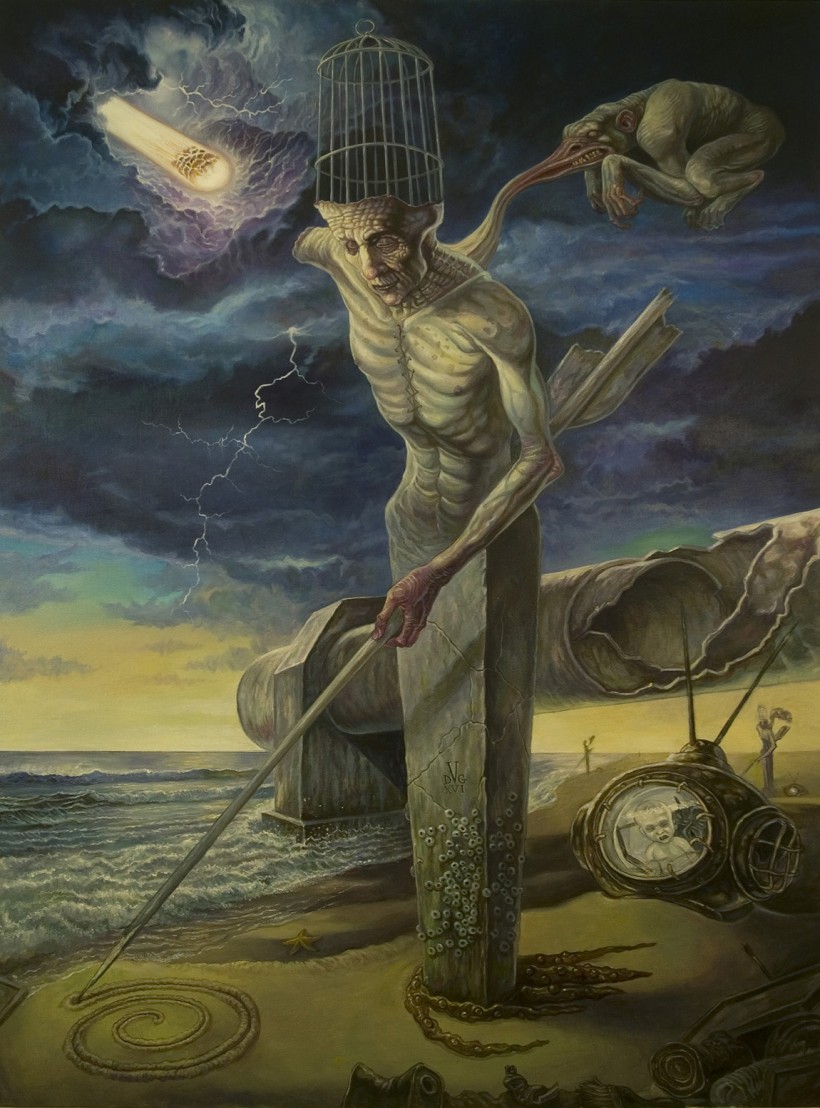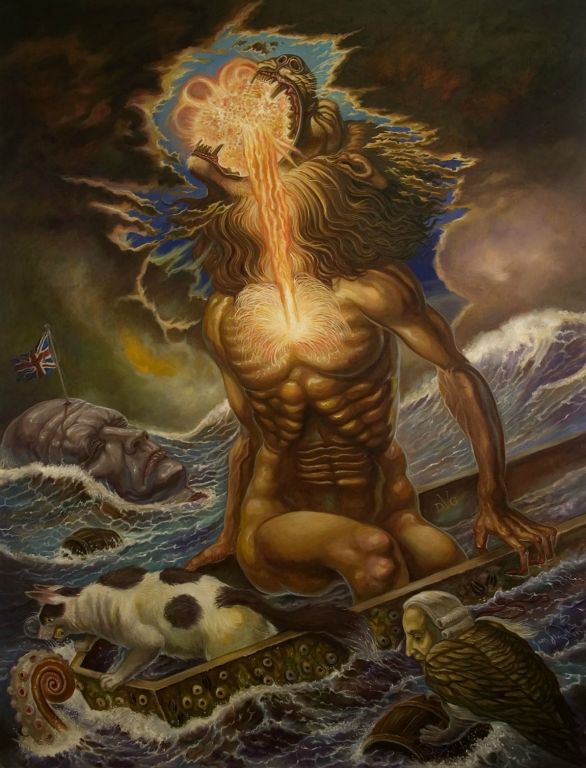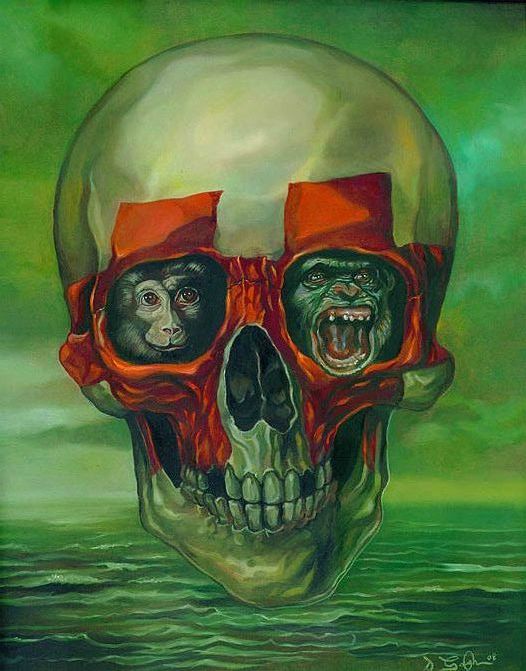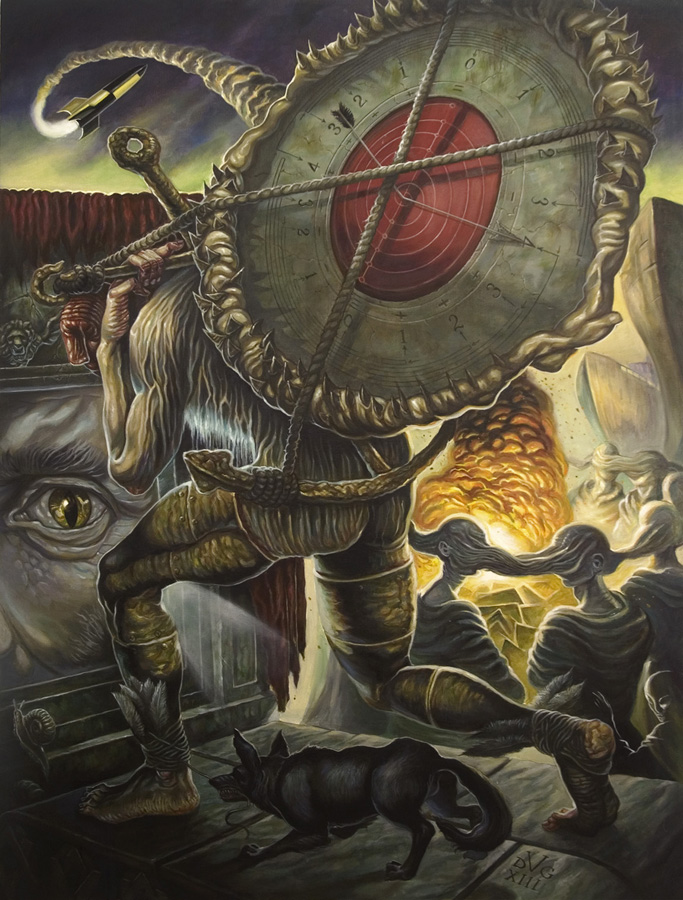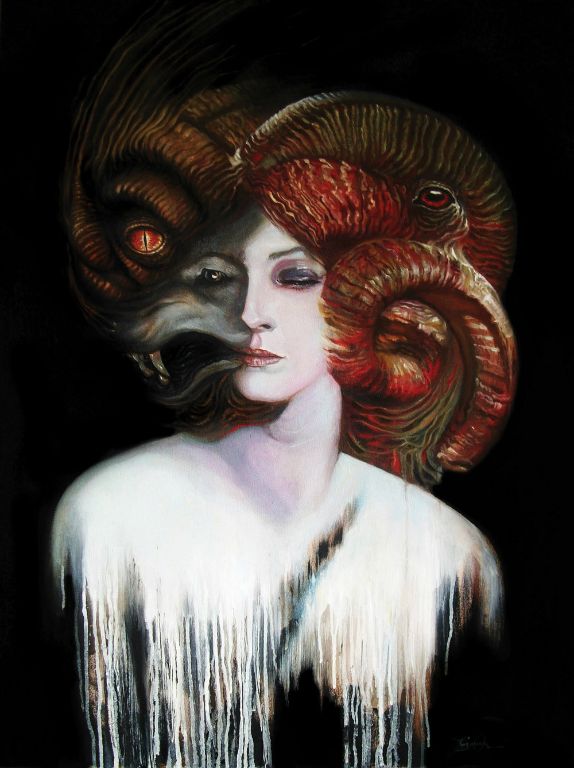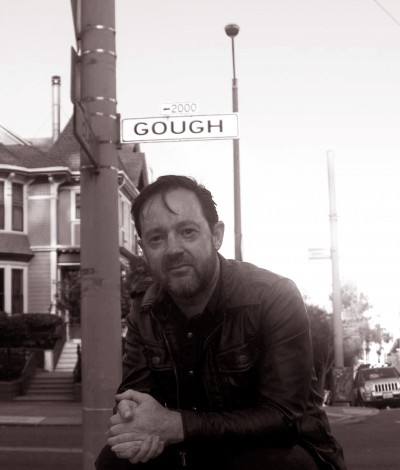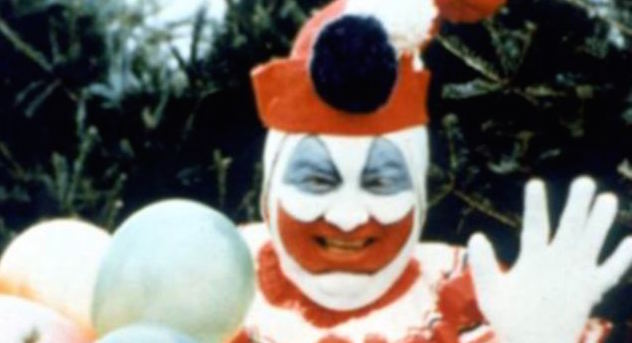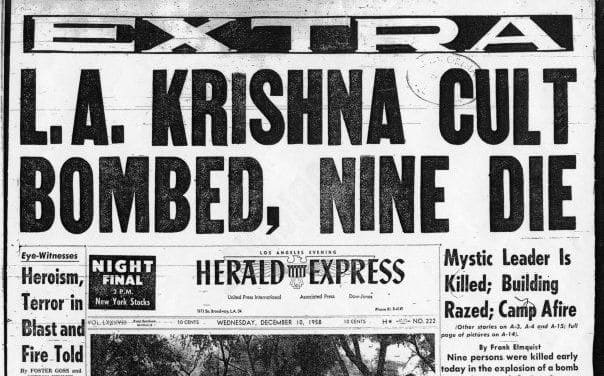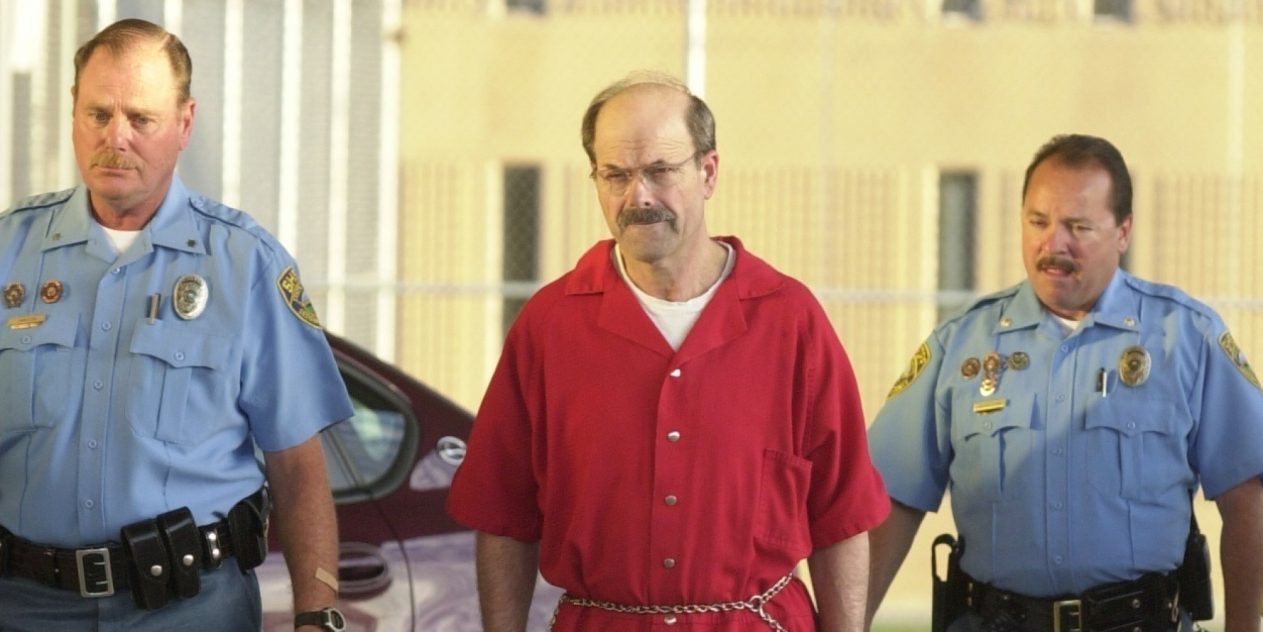It was by pure accident really that I stumbled upon San Diego artist David Van Gough. While nursing a hangover at home one day with my girlfriend and perusing Netflix, we came across the documentary “Serial Killer Culture”, which features collectors and historians of all things macabre. About half way through the film, a segment came on featuring an interview with David in regards to his Man/son pieces and what inspired him about this infamous moment in American history. I quickly fell in love with his artwork as they showcased it, which strikes up comparisons to Salvador Dali and Max Ernest, both of whom are beloved artists in our house. After finishing the documentary, I composed a brief email to David about the possibility of doing an interview for CVLT Nation. What resulted was a rapid fire succession of volleys between the two of us over the last month or so, during which time I became absolutely charmed by his wit and sense of self, which resonates not only through his work, but also his words. For those who have been unaware of him till now, take note. This man has a vision that cannot be denied. As things progressively fall apart around us, I have a strong feeling that David’s artwork will becoming more frequently seen across the globe, keeping pace with our increasingly dark reality.
David: It was because of my art for my Man/son show at Hyaena gallery in October 2012 , which had been my esoteric exploration of the cult and various conspiratorial tendrils surrounding the Manson family murders. I’d been fascinated with the case since I’d seen Sharon Tate in Fearless Vampire Killers as a child, and having been brought up in Liverpool, there had been this cognitive dissonance in the whole Beatles/Manson connection for me that had suggested something manifestly dark I’d felt in my hometown.
Then the following March, Bill Shafer – the curator at Hyaena gallery in LA – contacted me and said there was this bloke doing a film about the culture surrounding Serial Killers, and did I want to come up and talk about my Art, and oh – it was tomorrow. At that point, I had no idea about John (Borowski) or who he was, and just assumed it would be some student thing and was already going to a Birthday party for a friend in Long Beach. I ended the night toasting with several shots of Absinthe, so when we got to the shoot the following day, I was nursing the most miserable hangover from Hades. I hope it didn’t show, which is maybe down to Johns testament as a sterling film maker, but certainly helped me tap into the pain I’d felt manifesting the series.
Your website bio mentioned that you grew up next to a graveyard, which was visible from your window. Some children would have found this absolutely terrifying and a source of constant nightmares. Can you recall or walk through those years and perhaps how that scenery shaped you during your youth? Were you always attracted to the more dark and abstract paths of our world?
David: My bedroom overlooked an allotment in Anfield cemetery that was given over to the Chinese community in Liverpool, and the oddest thing was that the gravestones were all carved in these incredible glyphs and logos that comprise the language. So I had no idea who or what was buried beneath, and the characters seemed more like weird messages or incantations from beyond to me, and so to in my young fertile imagination, it probably felt like there was a dialogue going on between the living and the dead. At night, you could pull back the curtains, and swear you could see shapeless masses moving through the trees.
The same cemetery also had a railway line running beside it, where years later, young Jamie Bulgers’ body would be discovered, so perhaps I was picking up on some future dark imprint on the ether.
Personally too, it was a dark time – my old man was recovering from a broken back from falling off a roof, and was in and out of hospital, and we were really struggling, plus there’d been a succession of aunts and uncles dropping like flies from some form of cancer or other, so for a child growing up amongst this, the veil definitely seemed thinner, and death certainly permeated everything.
This was also the late 70’s remember, a time that seemed to be mired in all this esoteric stuff – late night Hammer horror, Man Myth and Magic at the Newsagents, Arthur C Clarke’s Mysterious World on TV, Pan Books and House of Mystery comics – to a curious Catholic boy, it was all this perfect culmination of influences that fed my imagination, and if it shaped anything, then perhaps it’s where I learned to recapitulate it all into something else – certainly the things I retreated to seemed less dark and menacing than my real life.
Any particular favorite Hammer Films that have stuck with you to this day?
David: Hah – that’s such a tough one – so unfair. You know, I actually got into those movies because of their comic adaptations, which I saw first in House of Hammer magazine – artists like John Bolton and those incredible covers by Brian Lewis. Both artists were a huge formative influence on me. As for the films, I could say the Devil rides out, but then there Lee’s turn as the count in swinging London in the 70’s – Dracula AD – plus Carolyn Munro is in it. Oh and then there’s Maddy Smith and Ingrid Pitt in Lust for a Vampire – complete camembert and completely wonderful. Truth be told, though, I actually prefer Hammer’s rivals Tigon better – Blood on Satan’s Claw and Wicker Man particularly, and I’m convinced Creeping Flesh sent me on a schizophrenic episode when I was eleven.
You’re currently winding down on an exhibit at the Bash Contemporary in San Francisco. How did everything fall into place with this exhibit and how do you feel the reaction has been so far?
David: Fall into place is a good way to describe it – because things literally did descend…they descended to ascend, if that makes any sense. It’s such a weird summation of energies when you complete a body of works, and It’s hard to articulate the weeks running up to the Purgatorium show, because I was immersed in such a raw chaotic place of stress and relief.
I guess I’m in the eye of the storm right now – that in between place were you can detach yourself from it, because it’s like hanging your bruised remains on a wall before it comes back to haunt you.
As for the reactions – I can only really talk of my inner circle – fellow artists who I admire hugely, folks who believed and stuck out the journey with me thus far, those friends who traveled from all over to see the show, and their responses have been wonderful and awestruck and vindicating and congratulatory. Ultimately, they are the reactions that matter the most, because if they had hated it, I might have been looking at reimbursing a few airline tickets right now.
Are there any central themes to these new pieces being shown?
David: It started out to be this thing about legacy. I was looking down the barrel of my mid forties and realizing that with less time ahead than behind, it was likely that any artistic legacy I might hope to have would be consigned to oblivion. I had this terrible nightmare in which I saw years hence, where my work sat propped, fading and forgotten behind old dusty clocks somewhere in a grotty thrift store, and it wasn’t even that I longed to be a footnote in some future Art history volume, it was that it laid bare the whole significance and relevance of my artistic quest. Was I merely filling time, was I merely manifesting a signifier for meaning? It was the whole shabby search for why I am, and it brought me back to the Van Gogh thing, that martyred bastard’s shadow, because ultimately anything I do will always be obscured by the Godfather of modern Art, so it was me facing that and any place I inhabit in the Art continuum, but told partially through Shakespeare’s the Tempest.
I know a number or artists refuse to do commission work, based on the fact that what they create is an expression of themselves and for themselves. Have you ever done commission work or thought about it?
David: Good question, and I would say yes on both counts. As a general rule, my remit for doing commission work absolutely depends on me being able to relate to it on some kind of level, be it emotional or esoteric or I like the music or whatever, and then of course the money is always useful. Is it possible then to recapitulate your vision for dough without somehow compromising it? Well, I don’t believe that anyone has ever approached me, without having seen or understood the kind of work that I do. Certainly, if you look at someone like Giger, then I like to think it’s possible to create career-defining work as a gun for hire.
Though I’m sure he was never in any danger of being haunted by an old portrait of someone’s dead chihuahua, and so it follows.
During your formative years, where their any artists or specific paintings that really called out to you, maybe influenced your hand a bit?
David: Too many to mention, but I keep going back to Bosch, because it shattered my little parochial world wide open when I saw The Garden of Earthly Delights – I wanted to be right in there because it looked like the internal world I couldn’t yet articulate. I have my old Art teacher, Miss Hughes, to thank, because she saw something in my daft scrawls, enough to realize that it would mean something – and you know the book wasn’t even in color, it was one of those dusty black and white text books from the forties, but it was profound, like seeing God in the window or something. She’d be fired for introducing me to it today.
Oh, and Kevin O’Neill, I know it sounds odd and a lot of people from the US may not have even heard of him, but his work on the comic strip Nemesis was like dropping a tab of LSD in my Saturday morning cornflakes – mad as cheese but another world completely.
After reading your bio before our initial contact, I was fascinated with the Necrorealist art movement, as I had never heard of it before. Care to shed a little light onto this and how it came to effect your own visions and art?
David: Necrorealism was something which was founded I think in Leningrad around the 1980’s, by the filmmaker Yevgeny Yufit. It was a reaction to the social, political and economic plight of that country at that particular time, and as I understand it, it’s original central tenet was to encapsulate the end of Socialist rule, and make a cypher of it; declare it a rotten corpse so all the artwork and films that surrounded it, were like a manifestation of death. Of course it became more existential, interchangeable with the totalitarian aspect of living and dying.
Generally, I’ve always consciously tried to steer myself away from being a categorized as any sort of movement because its too limiting, but when I came across the Necrorealist movement, I was right in the midst of my momento mori series, Theothantos, and I figured if I was going to be a part of playing the name game, that ideologically speaking, Necrorealism would be a fairly accurate raft to cling to.
Finally, with the documentary having been out for awhile, another exhibition under your belt and a fair bit of attention coming your way, what are your plans for the future?
David: Well, I just opened Studio V at La Bodega Gallery and studios in San Diego, so I’ll be working and selling Art from there, which is very exciting as there are the definite seeds of an Artist community beginning there. What will I be doing there? Well there were four or five pieces which I’d mooted for the Purgatorium series, but for whatever reason I didn’t think fit the narrative, so I’m trying to see if they will be additions as part of a kind of redux or something entirely different. My friend Christopher (Ulrich) suggested that I should follow the route of Dante, and that my subsequent series should be Hell and Paradise, so I do have that in the back of my mind, but I do get a sense that what I do next will also have more of an historically ominous context to it. Both of my last series set me on a whole avenue of esoteric exploration, and I feel prevailing dark times ahead for this country, so it’s certainly going to seep its way into my work.


